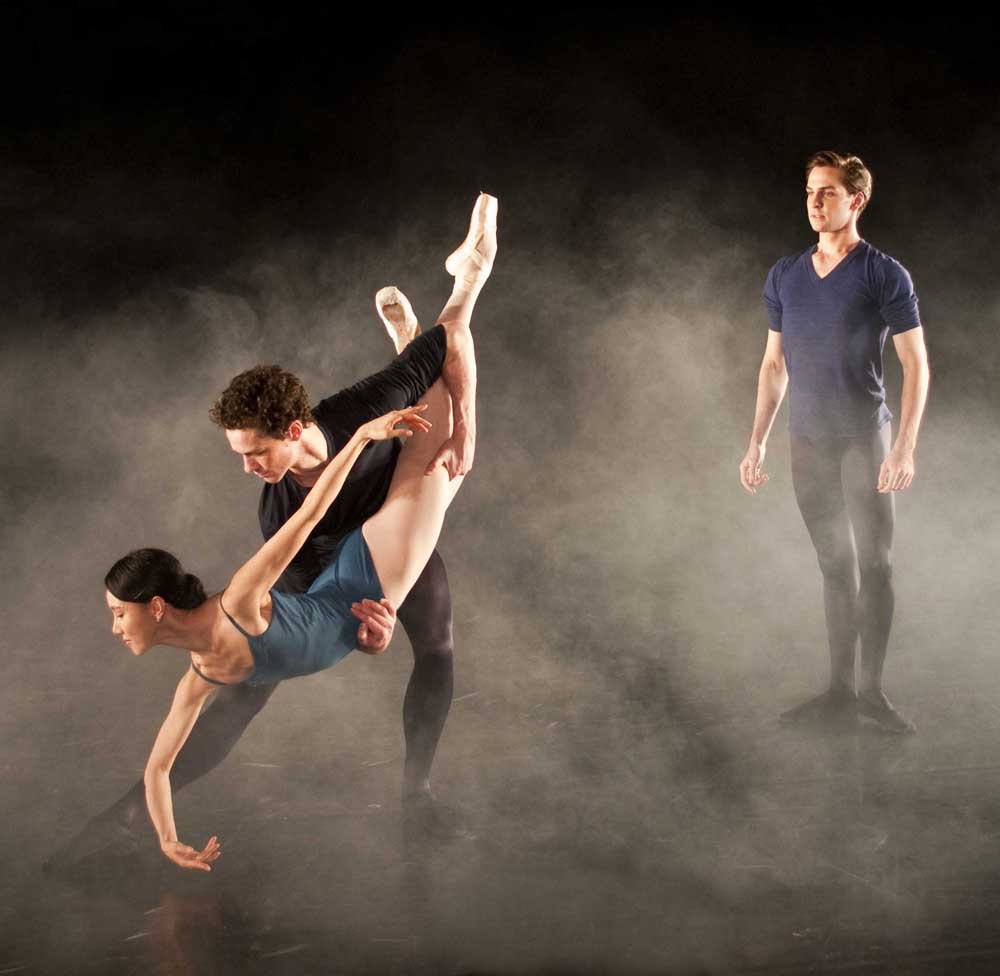PBS details path of ballet’s artistic director
Published 12:00 am Wednesday, April 29, 2015

- Courtesy PBS via Tribune News ServiceHee Seo, Cory Stearns and Joseph Gorak are members of the American Ballet Theatre, celebrating its 75th anniversary this year. PBS will air a documentary on ABT on May 15.
PASADENA, Calif. — When Kevin McKenzie was 18, he found himself dancing with prima ballerina Dame Margot Fonteyn. While he was just one of the cavaliers, it was a coup for the young man who had goofed up his tap-dancing class when he was in the seventh grade.
It was one long leap that led McKenzie to where he is today: artistic director of the American Ballet Theatre. But it didn’t begin fortuitously. His father was in the meat packing business, and McKenzie was the youngest of 11 children.
“We were not well off, and my journey was a little like the ‘Billy Elliot’ story,” he says.
“I had a friend … who was going on and on about these tap-dance lessons, how much fun they were. And my father overheard us talking, and he said, ‘You should go to your friend’s tap dance class. Who knows, you could be the next Fred Astaire.’”
Two months later his dad asked how he was doing. “I was not very coordinated. So he said, ‘You should go to your sister’s ballet class. Football players take ballet. You could be a good tap dancer.’” But in his prepubescent state, McKenzie says, he couldn’t face entering a room full of girls in tights. “I just couldn’t do it.”
So his parents arranged three private lessons for him and his sister. “After three lessons I was hooked. I was fine. I started to give up the basketball team, the acrobatic class and the tap class — which was a turning point for my father because ballet wasn’t his quote-unquote cup of tea,” he grins.
Their dance teacher approached his parents and told them that both children were talented, and that they needed a more expert instructor than someone from the suburbs of Burlington, Vermont.
“So they arranged to have both of us evaluated and went looking for a school to send us, and we ended up at the Washington School of Ballet at ages 12 and 13 or 13 and 14. I think my parents saw a way out for us.”
Although his sister quit professional ballet after six months, that marked the beginning of McKenzie’s soaring career. He went on to become a leading dancer with the Joffrey Ballet and the National Ballet of Washington, later becoming a soloist with the American Ballet Theatre, which is celebrating its 75th anniversary this year.
To commemorate that event, PBS’s “American Masters” is presenting the documentary “American Ballet Theatre: a History” on May 15. McKenzie is a pivotal part of the film: He has been artistic director of the company for 23 years.
But forsaking his tights for a worsted suit was not easy. “The transition from dancer to artistic director was a very tumultuous time,” he says.
“When I joined as director, the company was on its knees. It was in such dire financial straits that it was ready to close, and I was the go-to guy of last resort.
“So it came down on me, and I was convinced to do it because I had nothing to lose. I had no reputation as an administrator or artistic director or anything. I had a wonderful reputation as a performing artist, but there was a plea like, ‘No one will blame you if you fail because you’ll go down fighting.’”
He made it clear that he didn’t want to be hustling funds, nor would he settle for a desk job. “For me it needed to be about the artistic planning, about the hiring, firing of the artist. It needed to be about coaching and teaching and, at that time when I joined, about choreographing.”
When he was 35 and working with the nation’s top ballerinas, McKenzie became very ill with ulcerative colitis. In fact, he’d had a terrible bout 20 years earlier. It returned with a vengeance. He lost 35 pounds and had to miss a season and a half.
“I had in my mind that I was going to dance till I was 40 because I had the facility and had access to incredible training. So don’t waste it. I didn’t quit. I said to myself, ‘You have to come back to a place of good health and good condition and make your decision from there.’”
It was then that he decided to concentrate on choreographing. But when he was offered the artistic director’s position at the ABT, he knew he’d have to sacrifice the choreography.
“That was the single biggest heartache,” he says, nodding, his leather jacket squeaking as he moves. “I had so completely envisioned what my process for choreographing and living out that creative life (would be), because it’s entirely creative.”
To this day, McKenzie feels that his childhood fortified him for the job. “I think that the amalgam of growing up in such a large family where there wasn’t time for any acting out or any ego. It was like, ‘OK, everybody, we all have to get through this day. And at the end of it, the beds have to be made, the dishes have to be done, and la-da-da-da-da-da. And I’m not doing it alone, we’re all doing it.’ It was organized chaos, and that’s what I do now.”






